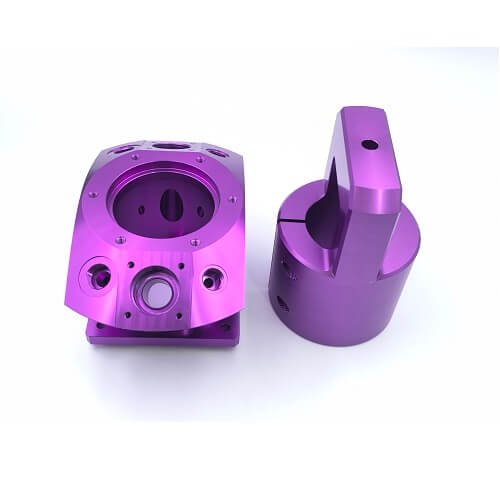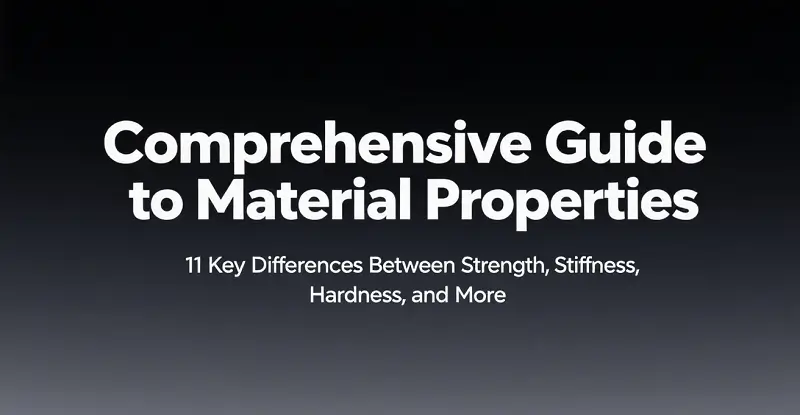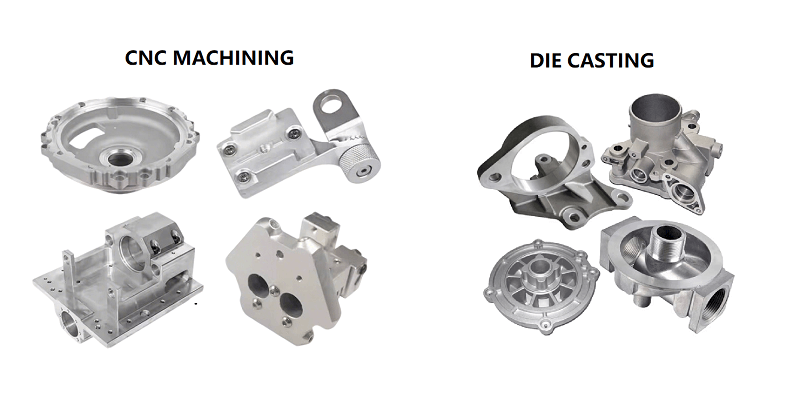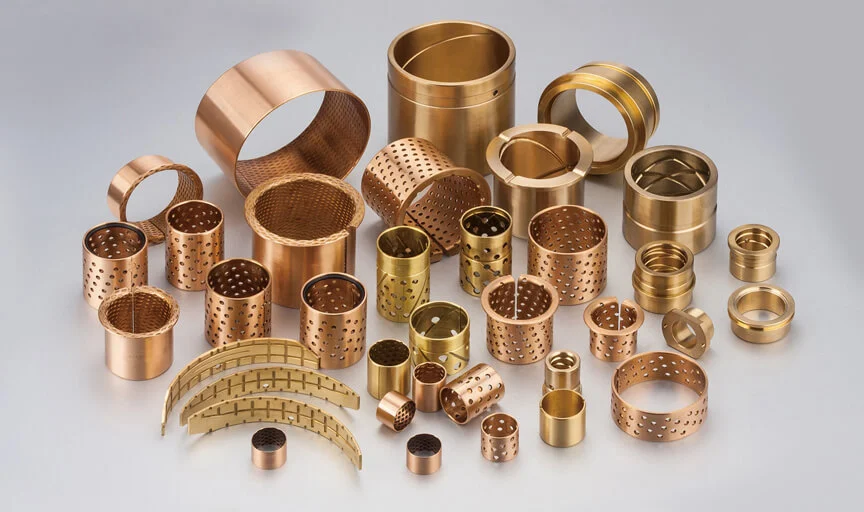Table of Contents
1. Overview of Surface Treatment Processes
Definition of Surface Treatment
Surface treatment processes refer to a series of techniques that utilize physical, chemical, or mechanical means to process the surface of a metallic material in order to change its surface properties. These techniques include, but are not limited to, cleaning, polishing, coating, heat treatment, etc. The purpose is to enhance the material’s corrosion resistance, abrasion resistance, aesthetics, or other specific physicochemical properties without changing the basic structure of the material.
Purpose and Importance of Surface Treatment
The surface treatment process is crucial for metal materials, and the main purposes include the following:
Improvement of Corrosion Resistance:
Through surface treatment, such as plating, anodizing, etc., the metal can be effectively isolated from the contact of corrosive media, prolonging the service life of the material.
Enhance wear resistance:
Surface hardening treatment, such as carburizing, nitriding, etc., can form a layer of higher hardness on the metal surface of the protective layer, reducing wear.
Enhance aesthetics:
Through polishing, brushing, spraying and other processes, the appearance of the metal texture and color can be improved to meet aesthetic needs.
Realize special functions:
For example, surface plating can realize electromagnetic shielding or improve electrical conductivity, and through specific chemical treatment, can give the metal surface antibacterial properties.
Surface treatment process has a wide range of applications, from daily necessities to aerospace, medical devices and other high-end fields, and are inseparable from the application of these technologies. With the development of science and technology and the improvement of environmental protection requirements, surface treatment technology is also constantly innovating to meet the new market demand.
2. Surface Modification Process
Surface Hardening

Surface hardening is a heat treatment process that improves the hardness and wear resistance of metal surfaces by rapid heating and rapid cooling. The technique is mainly applied to steel materials by heating the metal surface to austenitizing temperature and then cooling it rapidly to form martensite or other hardened organization.
Process Characteristics:
Surface hardening does not change the chemical composition of the material, and different surface hardnesses and depths can be obtained by adjusting the heating and cooling rates.
Applications:
Commonly used to improve the service life and performance of tools, molds, bearings and other parts.
Technical Data:
For example, for carbon steel material, the hardness after surface quenching can reach HRC58-62, and the depth of the hardened layer is generally within the range of 0.5-2.5mm.
Laser Surface Enhancement

Laser surface hardening is a process that utilizes a focused laser beam to rapidly heat a metal surface, followed by rapid cooling to harden the material surface. This technology has the advantages of a small heat-affected area, small deformation and strong controllability.
Process Principle:
The laser beam is focused onto the material surface through the optical system, and the material absorbs the laser energy and rapidly heats up to the phase transition temperature or above the melting point, and then rapidly cools down through heat conduction and convection to form a hardened layer.
Technical Advantage:
Laser surface hardening enables localized hardening with a high degree of flexibility and controllability, and is suitable for surfaces of parts with complex shapes or difficult access.
Application examples:
In the automotive and aerospace industries, laser surface hardening is used to improve the wear resistance and fatigue life of engine components, driveline parts, and so on. For example, the hardness of gears can be increased to over HRC60 after laser surface hardening, significantly improving their load-carrying capacity and durability.
3. Surface Alloying Process
Chemical Surface Heat Treatment
Chemical surface heat treatment is a process of changing the chemical composition and organization of a metal surface by heating the metal in a specific medium so that active atoms in the medium penetrate the metal surface. This treatment can significantly improve the hardness, wear resistance and corrosion resistance of the metal surface.
Types of processes:
Chemical heat treatment mainly includes carburizing, nitriding, carbon-nitrogen co-penetration, multi-dimensional co-penetration, etc., each process according to the different elements infiltrated, with different performance enhancement effects.
Carburizing treatment:
In the process of carburizing, carbon atoms penetrate into the metal surface to form a carbon-rich hardened layer. This process is applied to low alloy and medium carbon steels and is often used to improve the wear resistance and load carrying capacity of mechanical parts.
Nitriding:
Nitriding is the infiltration of nitrogen atoms into the metal surface to form a nitrided layer with excellent wear resistance, corrosion resistance and fatigue strength. This treatment is applicable to materials such as stainless steel and alloy steel.
Carburizing and Nitriding
Carburizing and nitriding are two common processes in chemical heat treatment that enhance the properties of a material by changing the chemical composition of the metal surface.
Carburizing:

Process Characteristics:
Carburizing is carried out in a closed carburizing furnace, where carbon atoms form a diffusion layer on the metal surface by controlling the atmosphere composition and temperature.
Technical parameters:
For example, the carbon content of the carburized layer usually ranges from 0.8% to 1.2%, and the depth of the hardened layer can be up to 1-2 mm.
Performance enhancement:
The hardness of the surface of the carburized metal is significantly increased, while retaining a certain degree of toughness and plasticity, which makes it suitable for parts subjected to heavy loads and wear.
Nitriding:

Process Characteristics:
Nitriding is usually carried out at lower temperatures, where nitrogen atoms form a diffuse layer on the surface of the metal, either by ammonia decomposition or by using nitrogen directly as a medium.
Performance Advantages:
Nitriding layers offer extremely high hardness and wear resistance, as well as increased fatigue strength and corrosion resistance, making them suitable for precision instruments and high-strength parts.
Both processes can significantly enhance the properties of a metal surface, but the choice depends on the type of material, the desired properties and the application scenario. By precisely controlling the parameters of the chemical heat treatment, the desired performance enhancement can be achieved.
4. Surface Conversion Film Processes
Blackening and Phosphatizing
Surface conversion film technology chemically or electrochemically forms a protective film on the surface of a metal to improve its corrosion and abrasion resistance, as well as to enhance aesthetics.
Blackening:
This is a process in which a metal (usually steel) is heated to a certain temperature, and an oxide film is formed in air. The oxide film is usually blue or black and provides a degree of corrosion resistance.

Technical characteristics:
The blackening process is simple, inexpensive and suitable for mass production. The thickness of the oxide film is thin, usually between a few microns and tens of microns.
Application Examples:
Blackening is widely used in tools, machine parts, weapons, etc., to provide basic corrosion protection and improve appearance.
Phosphatizing
Phosphatizing is a process that forms a phosphate film on the surface of a metal, primarily used on steel materials. The phosphate film improves coating adhesion, enhances corrosion resistance and provides a good substrate for subsequent coatings.

Process Flow:
Phosphating usually includes the steps of degreasing, water washing, phosphating and water washing. The thickness of the phosphating film is generally in the range of a few microns to tens of microns.
Technical Advantage:
Phosphate film has good adhesion and uniformity, which can significantly improve the coating performance, widely used in automotive, aerospace and other industries.
Anodizing
Anodizing is an electrochemical process used primarily for the surface treatment of aluminum and aluminum alloys. In this process, the metal acts as an anode and forms an oxide film by the action of an electric current in an electrolyte.

Process Principle:
During the anodizing process, the aluminum surface reacts with the oxygen in the electrolyte to produce a dense film of aluminum oxide. This film has excellent corrosion resistance, wear resistance and good decorative properties.
Technical Parameters:
The thickness of the oxide film can be adjusted according to the need, usually between a few microns and several hundred microns. The color of the film can be achieved by adding dyes or special treatment.
Applications:
Anodizing is widely used in aerospace, automotive, construction and consumer products. It not only improves the performance of the material but also enhances its decorative qualities by giving it a wide range of colors and textures.
Environmental Benefits:
The electrolyte used in the anodizing process is usually environmentally friendly, and the formation of the film layer does not produce harmful by-products, which is in line with the environmental requirements of modern industry.
Through the surface conversion film technology, the surface properties of metallic materials are significantly improved, which meets the high requirements for material properties in different industrial fields, and at the same time contributes to the sustainable development of materials and environmental protection.

More Knowledge
5. Surface Coating Processes
Thermal Spraying
Thermal spraying is a surface coating technology in which metallic or non-metallic materials are heated to a molten or semi-molten state and then sprayed onto the surface of the substrate using a high-speed air stream to form a coating with a certain bonding strength.

Process Characteristics:
Thermal spraying technology has the advantages of a wide range of coating materials, high bonding strength, strong adaptability, etc., and can be applied to the surface treatment of various metal materials.
Technology type:
Mainly includes flame spraying, arc spraying, plasma spraying, etc. Each technology has its specific application scenarios and advantages.
Applications:
Thermal spraying technology is widely used in aerospace, machinery manufacturing, chemical equipment and other fields to improve the wear resistance, corrosion resistance, high temperature resistance and other properties of parts.
Technical data:
For example, the bonding strength of ceramic coatings prepared by plasma spraying technology can reach more than 70MPa, which effectively improves the wear and corrosion resistance of the substrate.
Vacuum Plating
Vacuum plating is a technique of depositing thin films on metal surfaces by physical or chemical means in a vacuum environment for the purpose of improving the surface properties of the material.

Process Principle:
Vacuum plating mainly includes vacuum evaporation plating, vacuum sputtering plating and chemical vapor deposition methods. These methods by evaporating or sputtering materials in a high vacuum environment, so that atoms or molecules are deposited on the surface of the substrate to form a thin film.
Technical Advantage:
Vacuum coating is characterized by high film purity, strong adhesion, good film uniformity, etc. It can realize precise control of material surface properties.
Application examples:
In the electronics industry, vacuum coating technology is used to prepare conductive film, decorative film, etc., in the packaging industry, it is used to prepare films with good barrier properties.
Technical data:
For example, the titanium nitride film on the surface of stainless steel prepared by magnetron sputtering technology has a hardness of more than 2000HV, which significantly improves the wear and corrosion resistance of stainless steel.
Through the surface coating technology, the surface of metal materials has received significant performance enhancement, and the application of these technologies in the industrial field continues to expand, providing more possibilities for the functionality and aesthetics of the materials.
6. Other Surface Finishing Processes
Powder Coating
Powder coating is a common metal surface finishing process in which a protective and decorative coating is formed by spraying a powder coating onto a metal surface, which is then melted, leveled, and cured at high temperatures.

Process Principle:
An electrostatic generator is used to charge the powder coating, and then the charged powder is uniformly sprayed onto the grounded metal surface by a spray gun. Due to the electrostatic effect, the powder will be uniformly adsorbed on the metal surface. Finally, the sprayed workpiece is sent to the curing oven, where the powder coating is melted, leveled and cured at high temperature to form a uniform and smooth coating.
Technical features:
Environmentally friendly, non-polluting and high utilization rate of powder coating, the powder not attached to the workpiece can be recycled and reused. In addition, the coating quality of powder coating is excellent, with good abrasion resistance, corrosion resistance and anti-aging properties. It is safe to operate, and there is no risk of fire or explosion.
Application examples:
In the field of household appliances, products such as refrigerators, washing machines, and air conditioner outer unit housings are often powder coated. In the automotive industry, this process is also used for a large number of car wheels and body accessories.
Technical Data:
Powder coating curing temperature is usually between 180 and 200 degrees Celsius for 10 to 20 minutes, the particle size of the powder coating is usually between 10 and 100 microns, the thickness of the coating is usually between 50 and 150 microns, the electrostatic voltage is between 50 and 100 kilovolts and the efficiency of the spraying process is usually between 60 and 70%, which can be increased to more than 95% after recycling.
Powder spraying is a highly efficient, environmentally friendly and safe surface treatment technology with a wide range of application prospects and excellent coating performance.
Electroplating
Electroplating is a surface treatment technique that deposits one or more thin films of a metal or alloy on a metal surface by electrolysis. This technique can significantly improve the corrosion resistance, abrasion resistance, electrical conductivity, and decorative properties of metals.

Process Principle:
In the electroplating process, the metal to be plated serves as the cathode and the plated metal serves as the anode, and the deposition of the metal is realized through ion migration in the electrolyte.
Technical Advantage:
Electroplating has the advantages of uniformity, strong adhesion, and the ability to achieve a variety of metal platings, and is one of the most widely used technologies in surface treatment.
Application Areas:
Electroplating is widely used in many industries, such as automotive, electronics, construction, jewelry, etc., to improve the appearance, texture and functionality of products.
Technical Data:
For example, nickel plating not only provides good corrosion resistance, but also enhances the adhesion of subsequent chrome plating, which is usually in the range of a few microns to tens of microns in thickness.
Vapor Phase Deposition
Vapor phase deposition is a technique in which materials are physically or chemically deposited from a gaseous state on the surface of a substrate to form a thin film in a vacuum or a specific atmosphere.

Process Classification:
Vapor phase deposition is mainly comprised of two types: physical vapor deposition (PVD) and chemical vapor deposition (CVD). PVD achieves deposition through physical methods such as evaporation or sputtering, while CVD forms thin films on the surface of the substrate through chemical reactions.
Technical features:
Vapor deposition technology enables the deposition of high-purity, dense and ultra-thin films suitable for the preparation of high-performance coatings.
Application examples:
In the semiconductor industry, PVD is used to prepare conductive and barrier films. CVD is used to grow a variety of semiconductor and ceramic materials.
Technical data:
For example, TiN (Titanium Nitride) films prepared by PVD are used to improve the durability of cutting tools due to their very high hardness (up to 3000 HV) and excellent wear resistance.
Vapor deposition technology occupies an important place in modern industry because of its ability to prepare thin films with specific properties, which continues to drive the development and innovation of material surface treatment technology.

Look YPMFG’s Surface Finishing Service
We provide a variety of surface materials and engineering techniques, and assist our customers in terms of external quality, corrosion resistance, and mechanical performance.
7. Application Areas
Aerospace
The aerospace industry places high demands on materials for light weight, high strength and resistance to extreme environments. Metal surface treatment plays an important role in this field.

Application Example:
Anodizing of aluminum and aluminum alloys provides a wear and corrosion-resistant surface while reducing structural weight and is widely used for aircraft structural and engine components.
Technical Advantages:
Surface-treated components have a longer service life and higher reliability, contributing to improved performance and safety in aircraft.
Automotive Manufacturing
In the automotive manufacturing sector, metal surface treatment processes are used to improve the corrosion, wear and aesthetic properties of components.

Application example:
The painting and plating of automotive wheels not only improves their corrosion resistance but also enhances their cosmetic appeal.
Technical advantages:
Plating and PVD technologies are used to improve the wear resistance and aesthetics of automotive trim parts, while thermal spraying technologies are used to improve the wear resistance and high temperature resistance of engine components.
Electrical and Electronics
In the electrical and electronics sector, metal surface treatment processes are used to improve electrical conductivity, corrosion resistance and decorative properties.

Application example:
Chemical gold and tin plating of circuit boards to improve conductivity and solderability.
Technical Advantage:
PVD technology is used to prepare thin films with good electrical conductivity and corrosion resistance for a wide range of applications in electronic devices and connectors.
Medical Device
The medical device sector has stringent requirements for biocompatibility and corrosion resistance of materials, and metal surface treatment processes help to meet these requirements.

Application example:
Anodizing of implants to form a biocompatible alumina film that reduces adverse reactions between the implant and human tissue.
Technical advantages:
Micro-arc oxidation technology is used to prepare ceramicized film layers with excellent wear resistance and biocompatibility for medical devices such as artificial joints.
Architectural decoration field
In the field of architectural decoration, metal surface treatment processes are used to improve the durability, aesthetics and maintenance of materials.

Application examples:
Anodized aluminum panels for building curtain walls provide a variety of color options and good weather resistance.
Technical advantages:
Thermal spraying and PVD technologies are used to prepare decorative coatings with high hardness and wear resistance, extending the service life of building decoration materials.
Industrial machinery field
In the field of industrial machinery, metal surface treatment processes are used to improve the wear resistance, corrosion resistance and high temperature resistance of mechanical parts.

Application examples:
Surface hardening treatment of gears and bearings, such as carburizing and nitriding, is used to improve their wear resistance and load-bearing capacity.
Technical advantages:
Laser surface hardening technology is used to improve the surface hardness and fatigue life of key mechanical parts, reducing maintenance costs and downtime.
8. Summary
Metal surface treatment technology plays a vital role in product design. It not only improves the appearance and function of the product, but also realizes the designer’s innovative ideas and enhances the market competitiveness of the product. Contact us for the metal surface finishing process that best suits your project needs. Our experienced engineering team will customize the optimal solution for your application, material properties and performance requirements to enhance product durability and appearance.




